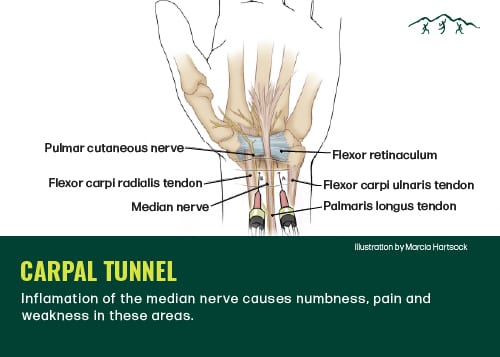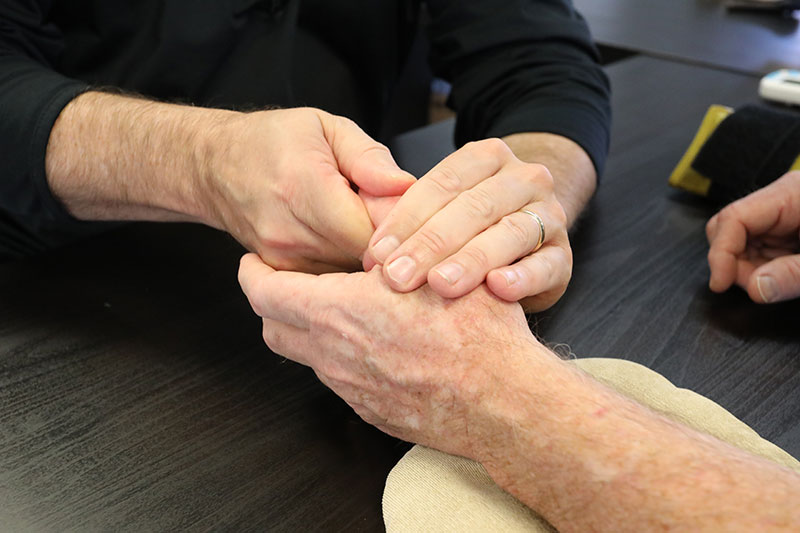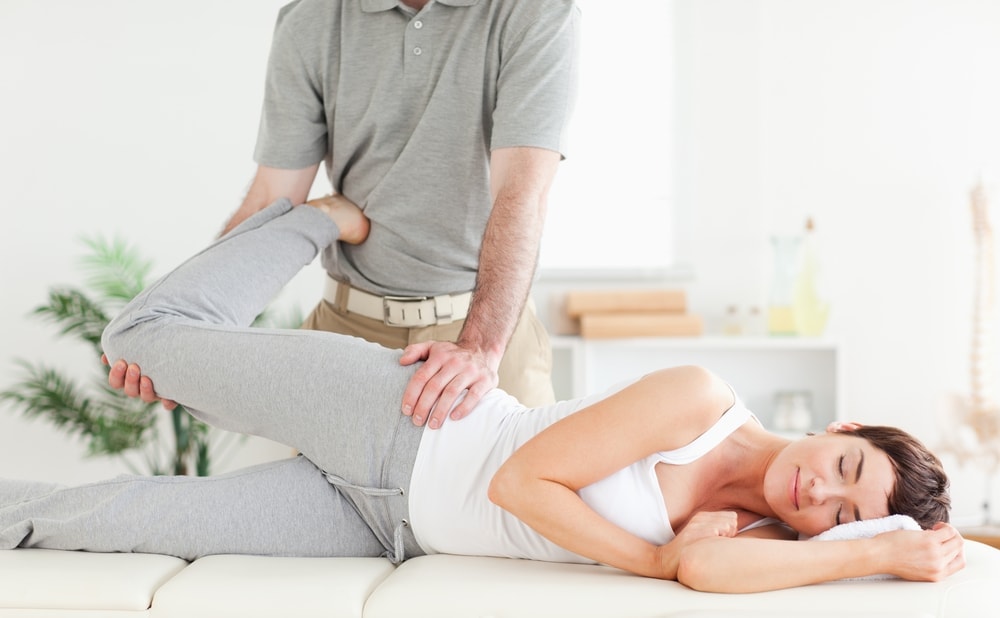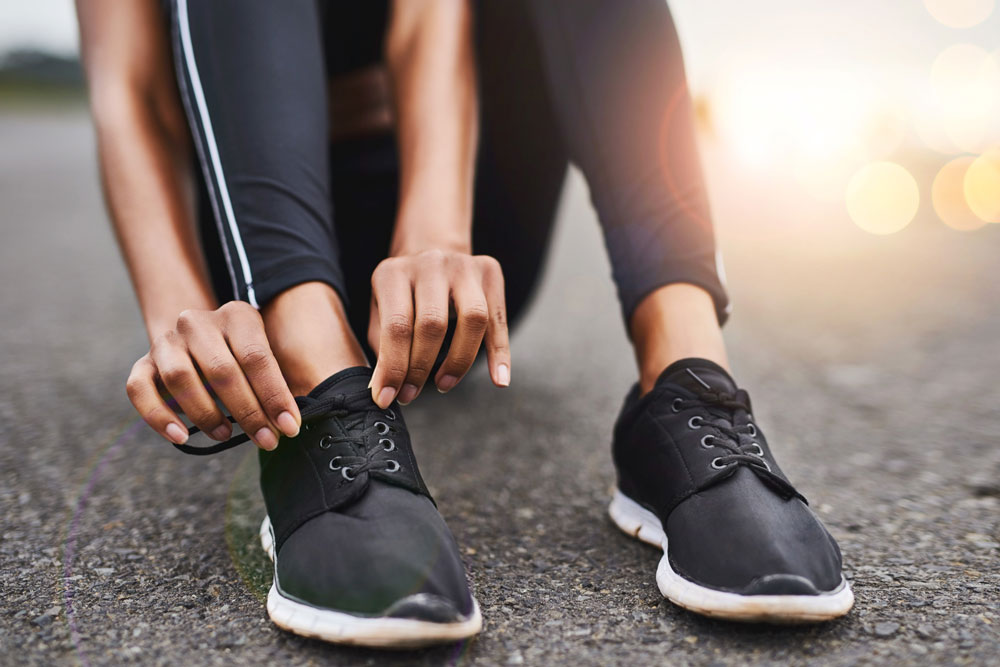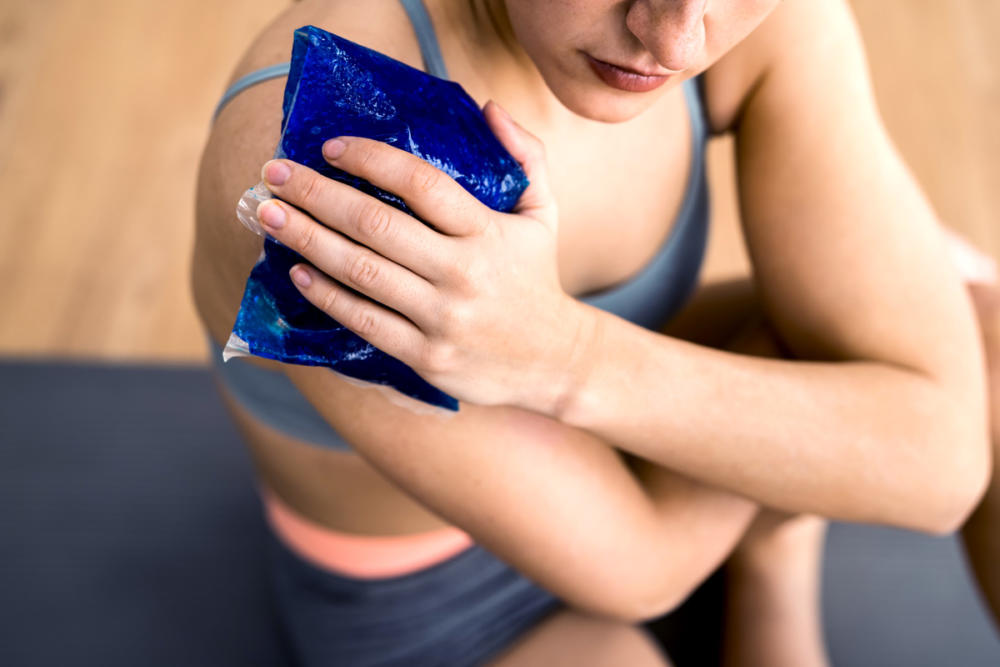One of the most common causes of carpal tunnel syndrome is poor posture. Carpal tunnel syndrome is the compression of the median nerve (which travels through the arm), caused by swelling as it passes through the carpal tunnel, a tight area in the wrist. Nine times out of ten, someone with carpal tunnel syndrome has the improper posture of a forward head and shoulders and a bent upper back. Bad postural habits can also speed up the progression of carpal tunnel syndrome and lead to permanent damage to the median nerve. The good news is that physical therapy can improve posture and ease symptoms of carpal tunnel.
Posture Correction for Carpal Tunnel
Simply telling someone to sit up straight is a great idea in theory. However, the muscles and ligaments won’t physically be able to straighten because they have already tightened up and adapted to a poor posture. Therefore, we must stretch out these tissues before straightening our posture.
Perform a Chin Tuck to Correct a Forward Head
A forward head leads to compression of the nerves that exit the neck and pass through tight muscles trying to hold the head in this position. Physical therapists (PTs) may implement a chin tuck in the recovery program to correct a forward head.
- Lie on your back and tuck your chin down
- Make a double chin while keeping your head in contact with the bed or floor.
Perform a Pectoral (Chest) Stretch to Correct Forward Shoulders
The forward shoulders also cause a tightening of the chest muscles and compress the same nerves as they continue through the body. Start with a pectoral (chest) stretch to remedy the forward shoulder and hunched back.
- Stand in a corner
- Place your forearms against the wall
- Lean your chest forward until you feel a stretch.
Perform Kyphosis Exercises
A hunched-back posture (kyphosis) results from the body trying to give our head support by moving the lower spine back under the head. PTs also utilize foam rollers; patients can lay on them and gradually straighten their upper backs. Recommended Kyphosis Exercises
There are many different techniques to achieve better posture, but knowing why you are doing specific exercises can be motivating for recovery. After several physical therapy sessions, the neck and shoulder tissues loosen up, and we can begin to ask patients to “straighten up.” Except for this time, it will affect the entire body and even decrease some problems in the arms.
Exercises and Stretches to Treat Carpal Tunnel Syndrome
Related content>> Carpal Tunnel Exercises and Stretches
Symptoms of Carpal Tunnel Syndrome
Treating symptoms as early as possible is vital to prevent surgery and reliance on pain medication.
- Numbness or tingling in the thumb, first finger, middle finger, and half of the ring finger.
- Weakness of the hand. Slower and altered signals to the hand from the brain. Often, someone with carpal tunnel syndrome will complain of having difficulty hanging on to objects such as coffee cups.
- Increased wrist pain or tingling while trying to sleep.
What Causes Carpal Tunnel Syndrome?
The cause of carpal tunnel syndrome is generally considered to be the product of excessive pinching with the thumb and fingers, combined with repetitive wrist bending. This causes a thickening of the tissue around the carpal tunnel as the body strengthens to deal with these stresses. The smaller carpal tunnel then compresses the median nerve more.
Related content>> Carpal Tunnel Syndrome from Gaming
Double Crush Syndrome and Carpal Tunnel
Double crush syndrome (DCS) has similar symptoms to carpal tunnel, but the difference is that double crush syndrome affects two or more locations of the peripheral nerve. DCS sheds new light on carpal tunnel syndrome in a recent model. In this model, the medial nerve is slightly swollen before reaching the carpal tunnel. This indicates it is already compressing in another area, so minimal pressure at the wrist would be enough to inflame the nerve. It turns out that these other crushing areas result from our 21st-century posture, caused by sitting for long durations. Therefore, we must address posture problems to address the double crush symptom adequately.
Find a Certified Hand Therapist
Doug Rich is a certified orthopedic specialist and a certified hand therapist. He has been a practicing physical therapist for over 20 years and was voted one of Arizona’s best orthopedic physical therapists. Doug is the owner and clinic director of our Red Mountain physical therapy clinic.
Foothills Sports Medicine Physical Therapy is dedicated to providing hands-on, quality care to patients suffering from every injury or complaint. Our staff is highly trained and will work with you to develop an individualized plan for your rehabilitation. If you’re experiencing pain in your hands, schedule a FREE Rapid Recovery Injury Assessment with Doug Rich, PT, CHT, at our Red Mountain clinic. He is a Certified Hand Therapist that can determine the best action to help relieve your hand pains.


